We are pleased to announce the 2018 Association for Mormon Letters Awards finalists in Creative Non-Fiction, Criticism, and Religious Non-Fiction. The final awards will be announced and presented on March 30 at the AML Conference, held in Berkeley, California. The finalists and winners are chosen by juries of authors, academics, and critics. The announcements include book blurbs and author biographies, adapted from the author and publisher websites.
Creative Non-Fiction
Wallace Jeffs, Destroying Their God: How I Fought My Evil Half-Brother to Save my Children. Zarahemla Books. Written with Shauna Packer and Sherry Taylor.
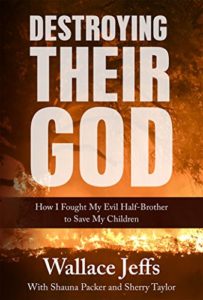 Memoir. Growing up as half-brother to future Fundamentalist Latter-Day Saint prophet Warren Jeffs, Wallace tried to follow FLDS teachings. After he built a successful business, the church required him to marry a second wife. Wallace fathered twenty children, but he never felt comfortable with polygamy or many other FLDS beliefs. As his prophet-brother increasingly manipulated him, Wallace started hearing about FLDS atrocities. On the day the FBI arrested Warren Jeffs for child rape, the prophet was en route to reclaim Wallace’s second wife for himself. Wallace defied the prophet and soon ended up in a coma. Though Wallace fears FLDS sabotage caused his car crash, he keeps fighting the sect.
Memoir. Growing up as half-brother to future Fundamentalist Latter-Day Saint prophet Warren Jeffs, Wallace tried to follow FLDS teachings. After he built a successful business, the church required him to marry a second wife. Wallace fathered twenty children, but he never felt comfortable with polygamy or many other FLDS beliefs. As his prophet-brother increasingly manipulated him, Wallace started hearing about FLDS atrocities. On the day the FBI arrested Warren Jeffs for child rape, the prophet was en route to reclaim Wallace’s second wife for himself. Wallace defied the prophet and soon ended up in a coma. Though Wallace fears FLDS sabotage caused his car crash, he keeps fighting the sect.
Wallace Jeffs was born the thirtieth child of Rulon Jeffs, polygamous prophet of the FLDS, and half-brother to imprisoned FLDS prophet Warren Jeffs. Raised as a devout FLDS member, Wallace was eventually excommunicated for defying Warren. Now he helps people leave the FLDS community and advocates for human rights and the protection of children. Father of twenty children and stepfather of eight, Wallace lives in Salt Lake City, Utah.
Tara Westover, Educated: A Memoir. Random House.
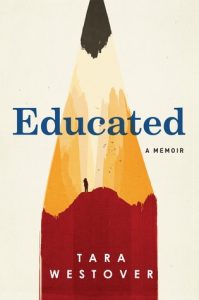 Memoir. Born to survivalists in the mountains of Idaho, Tara Westover was seventeen the first time she set foot in a classroom. Her family was so isolated from mainstream society that there was no one to ensure the children received an education, and no one to intervene when one of Tara’s older brothers became violent. When another brother got himself into college, Tara decided to try a new kind of life. Her quest for knowledge transformed her, taking her over oceans and across continents, to Harvard and to Cambridge University. Only then would she wonder if she’d traveled too far, if there was still a way home.
Memoir. Born to survivalists in the mountains of Idaho, Tara Westover was seventeen the first time she set foot in a classroom. Her family was so isolated from mainstream society that there was no one to ensure the children received an education, and no one to intervene when one of Tara’s older brothers became violent. When another brother got himself into college, Tara decided to try a new kind of life. Her quest for knowledge transformed her, taking her over oceans and across continents, to Harvard and to Cambridge University. Only then would she wonder if she’d traveled too far, if there was still a way home.
Tara Westover was born in Idaho in 1986. She received her BA from Brigham Young University in 2008 and was subsequently awarded a Gates Cambridge Scholarship. She earned an MPhil from Trinity College, Cambridge, in 2009, and in 2010 was a visiting fellow at Harvard University. She returned to Cambridge, where she was awarded a PhD in history in 2014. Educated is her first book. It was the second bestselling memoir of 2018 (after Michelle Obama), and was on many year-end best of lists, including the New York Times 10 Best Books of 2018.
Keira Shae. How the Light Gets In. BCC Press.
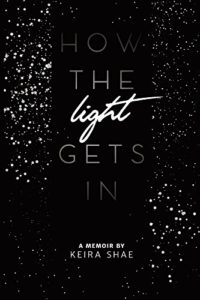 Memoir. In the bosom of Happy Utah Valley, Keira Shae and her family weren’t like everybody else. Their home was filthy, their mother was absent, and their cupboards were bare. What began as a disadvantaged existence quickly crumbled as Keira and her siblings grew up under the terror, abuse, and drug culture that their mother brought into the home. The only thing more incredible than their story of survival are the powers that transformed Keira’s fears into love, kindness, and resilience. How The Light Gets In is the true story of a girl who went from an impoverished prostitute’s daughter to an educated, loved, and empowered woman, wife, and mother.
Memoir. In the bosom of Happy Utah Valley, Keira Shae and her family weren’t like everybody else. Their home was filthy, their mother was absent, and their cupboards were bare. What began as a disadvantaged existence quickly crumbled as Keira and her siblings grew up under the terror, abuse, and drug culture that their mother brought into the home. The only thing more incredible than their story of survival are the powers that transformed Keira’s fears into love, kindness, and resilience. How The Light Gets In is the true story of a girl who went from an impoverished prostitute’s daughter to an educated, loved, and empowered woman, wife, and mother.
Criticism
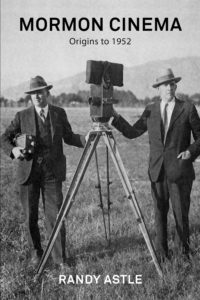 Mormon Cinema is the first single-author book to comprehensively treat Mormon film in all its components. It analyzes how events in nineteenth-century Mormon art and society helped shape early Mormon film, followed by a history of Mormons working in the film industry, mainstream depictions of Mormons on film, and movies produced by the institutional church throughout the first half of the twentieth-century, including events from the invention of television to the composition of “When You Wish Upon a Star.”
Mormon Cinema is the first single-author book to comprehensively treat Mormon film in all its components. It analyzes how events in nineteenth-century Mormon art and society helped shape early Mormon film, followed by a history of Mormons working in the film industry, mainstream depictions of Mormons on film, and movies produced by the institutional church throughout the first half of the twentieth-century, including events from the invention of television to the composition of “When You Wish Upon a Star.”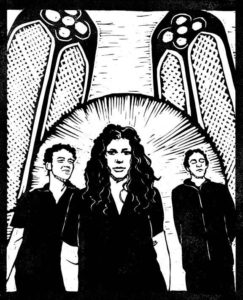
“The Minnesota-based indie-trio Low, when they are noted at all, are typically noted for two points: 1) for being “that slow, quiet band” that produces minimalist music at a deliberate pace and hushed volume; and 2) that the husband-wife duo at the band’s core are practicing Mormons . . . I suspect that Low’s Minimalism and Mormonism go hand in hand (and not just for the handy alliterative quality). Specifically, I argue that it is Low’s minimalism, their fearlessness in embracing the silences between notes, that allows Low to interact with the very things that can’t be said, that can’t be represented, the “unspeakable” thing outside discourse that is most responsible for Mormon spiritual conversion.”
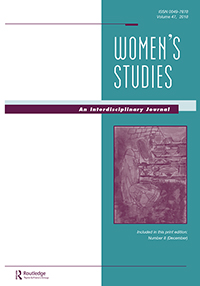 “American authors Terry Tempest Williams, Patricia Gunter Karamesines, and Phyllis Barber share some common ground in their writing. They all have written about Western American landscapes. All three were (or are still) members of the Church of Jesus Christ of Latter-Day Saints. And they are all women. In this article I will explore the work of these authors by looking at the role played by nature in their writing, seeking to underline the importance of Mormonism here, but as a set of cultural and social values more than as a source of spiritual inspiration.”
“American authors Terry Tempest Williams, Patricia Gunter Karamesines, and Phyllis Barber share some common ground in their writing. They all have written about Western American landscapes. All three were (or are still) members of the Church of Jesus Christ of Latter-Day Saints. And they are all women. In this article I will explore the work of these authors by looking at the role played by nature in their writing, seeking to underline the importance of Mormonism here, but as a set of cultural and social values more than as a source of spiritual inspiration.”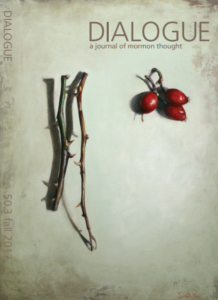 “In the past few years, since the publication of Fire in the Pasture: Twenty-First-Century Mormon Poets (Peculiar Pages, 2011), there has been an immodest outpouring of Mormon verse. These publications deserve the attention of those invested in the full expres- sion of Mormon intellectual culture, and the following essay seeks to provide a synoptic view of this vast material along with brief critical commentary.”
“In the past few years, since the publication of Fire in the Pasture: Twenty-First-Century Mormon Poets (Peculiar Pages, 2011), there has been an immodest outpouring of Mormon verse. These publications deserve the attention of those invested in the full expres- sion of Mormon intellectual culture, and the following essay seeks to provide a synoptic view of this vast material along with brief critical commentary.”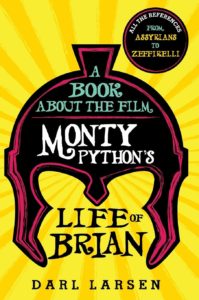 Monty Python’s Life of Brian was both a critical and commercial success, and has been since hailed as one of the greatest comedies of all time. But the film also faced backlash from religious groups for its blasphemy, perceived or otherwise. Larsen identifies and examines the plethora of cultural, historical, and topical allusions in the film. Organized chronologically by scene, the entries in this cultural history cover literary and metaphoric allusions, symbolisms, names, peoples, and places, as well as the many social, cultural, and historical elements that populate this film. By closely examining each scene, this book explores the Pythons’ comparisons of the Roman and British Empires and of Pilate and Margaret Thatcher. In addition, Larsen helps to situate Life of Brian in the “Jesus” re-examination of the postwar period, while also taking a close look at the terror groups of first-century Judea and the modern world.
Monty Python’s Life of Brian was both a critical and commercial success, and has been since hailed as one of the greatest comedies of all time. But the film also faced backlash from religious groups for its blasphemy, perceived or otherwise. Larsen identifies and examines the plethora of cultural, historical, and topical allusions in the film. Organized chronologically by scene, the entries in this cultural history cover literary and metaphoric allusions, symbolisms, names, peoples, and places, as well as the many social, cultural, and historical elements that populate this film. By closely examining each scene, this book explores the Pythons’ comparisons of the Roman and British Empires and of Pilate and Margaret Thatcher. In addition, Larsen helps to situate Life of Brian in the “Jesus” re-examination of the postwar period, while also taking a close look at the terror groups of first-century Judea and the modern world.Religious Non-Fiction
Bruce C. Hafen and Marie K. Hafen. Faith Is Not Blind. Deseret Book.
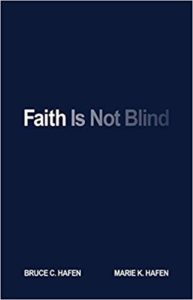 We often encounter unexpected questions and complexities that can challenge our faith. Faith is Not Blind offers fresh concepts and tools that will help readers learn from these experiences, rather than feeling disillusioned by them. Bruce and Marie Hafen draw upon a lifetime of experiences in Church service, college teaching, and parenthood to help readers embrace both the spiritual and the intellectual aspects of the gospel. Their approachable tone and real-life examples acknowledge complicated gospel issues, yet clearly and gently guide readers through the steps necessary to work through complexity, develop informed testimonies, and become filled with the faith that comes from knowing God.
We often encounter unexpected questions and complexities that can challenge our faith. Faith is Not Blind offers fresh concepts and tools that will help readers learn from these experiences, rather than feeling disillusioned by them. Bruce and Marie Hafen draw upon a lifetime of experiences in Church service, college teaching, and parenthood to help readers embrace both the spiritual and the intellectual aspects of the gospel. Their approachable tone and real-life examples acknowledge complicated gospel issues, yet clearly and gently guide readers through the steps necessary to work through complexity, develop informed testimonies, and become filled with the faith that comes from knowing God.
Bruce C. Hafen was called to the First Quorum of the Seventy in 1996 and received emeritus status in 2010. A widely recognized family law scholar, he has served as president of BYU-Idaho and dean of the BYU law school. His trilogy on the Atonement included the bestseller The Broken Heart. Elder Hafen recently served as president of the St. George Utah Temple. Marie K. Hafen received her bachelor’s and master’s degrees in English from BYU. She has taught English and religion classes at Ricks College and BYU. She has published asticles in the Ensign and was the coeditor of A Legacy Remembered, a selection of articles from the Relief Society Magazine. Marie has served as a member of the Deseret News Board of Directors.
Eric D. Huntsman, Lincoln H. Blumell and Tyler J. Griffin, editors. Thou Art the Christ, the Son of the Living God: The Person and Work of Jesus in the New Testament. BYU Religious Studies Center.
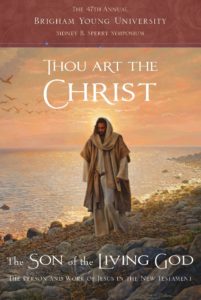 While Jesus and his disciples were at or near Caesarea Philippi, Peter testified that Jesus was “the Christ, the Son of the living God.” Martha had a similar divine testimony, proclaiming, “I believe that thou art the Christ, the Son of God.” In much the same way, a standard part of Latter-day Saint discourse includes bearing testimony that “Jesus is the Christ,” but what do we mean when we say that Jesus is the Christ? This volume compiles essays given at a BYU Sidney B. Sperry Symposium that uniquely address such questions from a Latter-day Saint perspective, bringing together both biblical scholarship and Restoration insights that invite us to come to Christ and apply gospel teachings to real life.
While Jesus and his disciples were at or near Caesarea Philippi, Peter testified that Jesus was “the Christ, the Son of the living God.” Martha had a similar divine testimony, proclaiming, “I believe that thou art the Christ, the Son of God.” In much the same way, a standard part of Latter-day Saint discourse includes bearing testimony that “Jesus is the Christ,” but what do we mean when we say that Jesus is the Christ? This volume compiles essays given at a BYU Sidney B. Sperry Symposium that uniquely address such questions from a Latter-day Saint perspective, bringing together both biblical scholarship and Restoration insights that invite us to come to Christ and apply gospel teachings to real life.
All three editors are on the faculty of the Department of Ancient Scripture at BYU. Eric D. Huntsman is a professor, and the author of the recent Becoming the Beloved Disciple: Coming unto Christ through the Gospel of John, which very nearly made this list of finalists. Lincoln H. Blumell is an associate professor, and Tyler J. Griffin is an associate teaching professor.
Adam S. Miller. An Early Resurrection: Life in Christ Before you Die. Maxwell Institute.
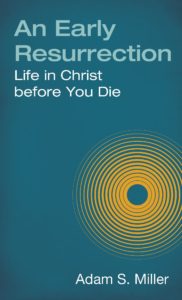 Along with Nephi, “we talk of Christ, we rejoice in Christ, we preach of Christ” (2 Nephi 25:26), but in all our talking and learning, have we learned how to live in Christ? What does a life in Christ look like—or feel like? In this exploration of the writings of the apostle Paul and Book of Mormon prophets, Miller examines what life in Christ looks like. We often hope for an abundant life with Christ in the next life, but how can we let ourselves and our own desires die so we can be born again to a new life, a full life in Christ, here and now in this mortal life?
Along with Nephi, “we talk of Christ, we rejoice in Christ, we preach of Christ” (2 Nephi 25:26), but in all our talking and learning, have we learned how to live in Christ? What does a life in Christ look like—or feel like? In this exploration of the writings of the apostle Paul and Book of Mormon prophets, Miller examines what life in Christ looks like. We often hope for an abundant life with Christ in the next life, but how can we let ourselves and our own desires die so we can be born again to a new life, a full life in Christ, here and now in this mortal life?
Adam S. Miller is a professor of philosophy at Collin College in McKinney, Texas. He and his wife, Gwen, have three children. He is the author of many books, including Rube Goldberg Machines: Essays in Mormon Theology (2012) and Speculative Grace: Bruno Latour and Object-Oriented Theology (2013), and two editions of Letters to a Young Mormon. He also serves as the director of the Mormon Theology Seminar. He has won two previous AML awards, and been a finalists two more times.
Jonathan Stapley. The Power of Godliness: Mormon Liturgy and Cosmology. University of Oxford Press.
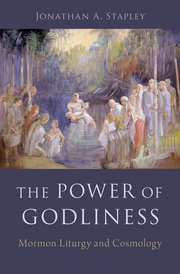 The Power of Godliness is a key work to understand Mormon conceptions of priesthood, authority, and gender. With in-depth research and never previously used documents, Stapley explores the rituals of ordination, temple sealings, baby blessings, healing, and cunning-folk traditions. In doing so, he demonstrates that Mormon liturgy includes a much larger and more complex set of ritualized acts of worship than the specific rites of initiation, instruction, and sealing that take place within the temple walls. The Power of Godliness shows both the nuances of Mormon belief and practice, and how the Mormon ordering of heaven and earth is not a mere philosophical or theological exercise. Stapley examines Mormonism’s liturgical history to reveal a complete religious world, incorporating women, men, and children all participating in the construction of the Mormon universe.
The Power of Godliness is a key work to understand Mormon conceptions of priesthood, authority, and gender. With in-depth research and never previously used documents, Stapley explores the rituals of ordination, temple sealings, baby blessings, healing, and cunning-folk traditions. In doing so, he demonstrates that Mormon liturgy includes a much larger and more complex set of ritualized acts of worship than the specific rites of initiation, instruction, and sealing that take place within the temple walls. The Power of Godliness shows both the nuances of Mormon belief and practice, and how the Mormon ordering of heaven and earth is not a mere philosophical or theological exercise. Stapley examines Mormonism’s liturgical history to reveal a complete religious world, incorporating women, men, and children all participating in the construction of the Mormon universe.
Jonathan Stapley received his Ph.D. from Purdue University and has been active in the field of Mormon History for over a decade. You can read some of his publications here. He also writes for the academic history Juvenile Instructor blog, and at By Common Consent. He is also the Chief Technology Officer for DFI Corporation, a bio-renewables company.
Laura Rutter Strickling. On Fire in Baltimore: Black Mormon Women and Conversion in a Raging City. Greg Kofford Books.
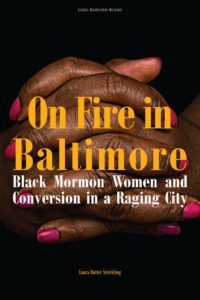 On Fire in Baltimore is more than just the personal stories of Black women who converted to Mormonism. Against the background of a city known for its racial and economic inequality, these devout women of color tell stories of drug addiction and rape, of nights spent in jail and days looking for work, and of single motherhood and grief for lost children. Yet, their stories are also filled with visitations from heavenly beings, dreams of deceased mothers, protection from violence, and missionary messengers. They share how they reconcile their membership in a historically White church that once denied them full membership because of their race. Laura Rutter Strickling takes the reader on an intimate journey where Black and White racialized lives meet, where she is compelled to question how her own whiteness has impacted her perspective, and where an unquenchable spiritual fire burns bright in a raging city.
On Fire in Baltimore is more than just the personal stories of Black women who converted to Mormonism. Against the background of a city known for its racial and economic inequality, these devout women of color tell stories of drug addiction and rape, of nights spent in jail and days looking for work, and of single motherhood and grief for lost children. Yet, their stories are also filled with visitations from heavenly beings, dreams of deceased mothers, protection from violence, and missionary messengers. They share how they reconcile their membership in a historically White church that once denied them full membership because of their race. Laura Rutter Strickling takes the reader on an intimate journey where Black and White racialized lives meet, where she is compelled to question how her own whiteness has impacted her perspective, and where an unquenchable spiritual fire burns bright in a raging city.
Laura Rutter Strickling received her undergraduate degree from BYU and a Master’s in Intercultural Communication and PhD in Sociocultural Linguistics from the University of Maryland, Baltimore County. She also completed a two-year post-doctoral position in Urban Education in Baltimore City. She has written articles about language, culture, and education. In her free time, she rides bikes with her husband throughout the city of Baltimore.

.
What an eclectic mix.